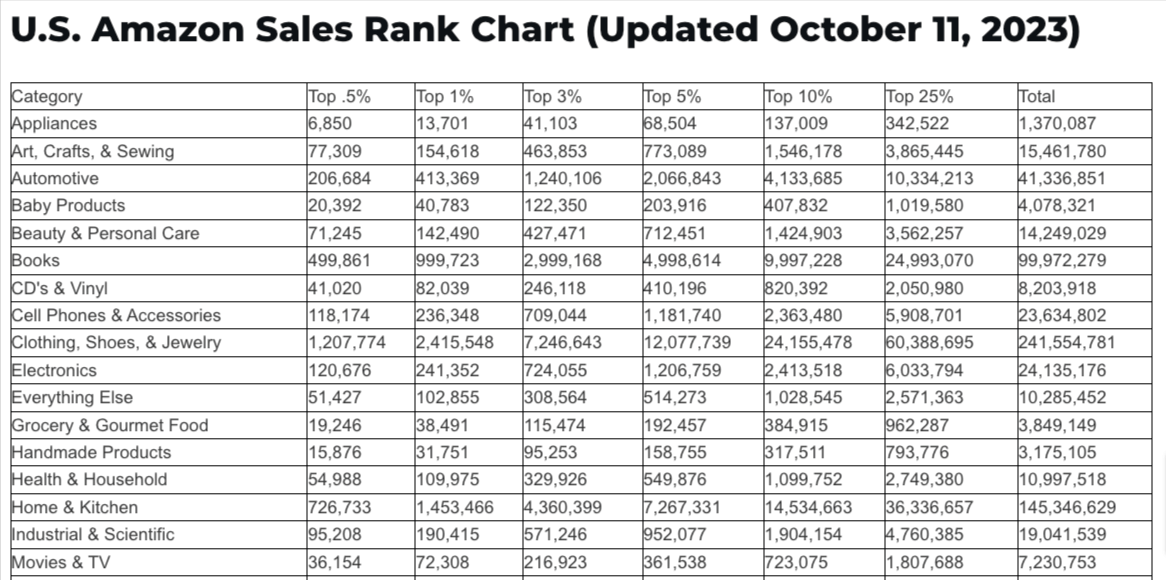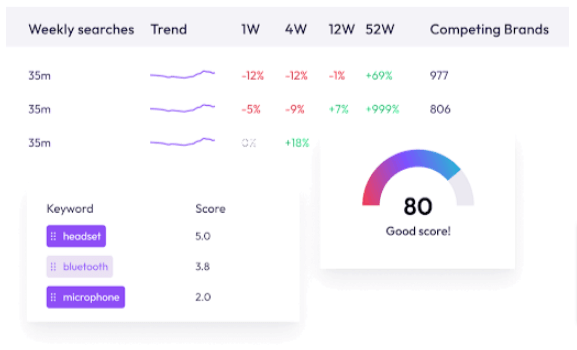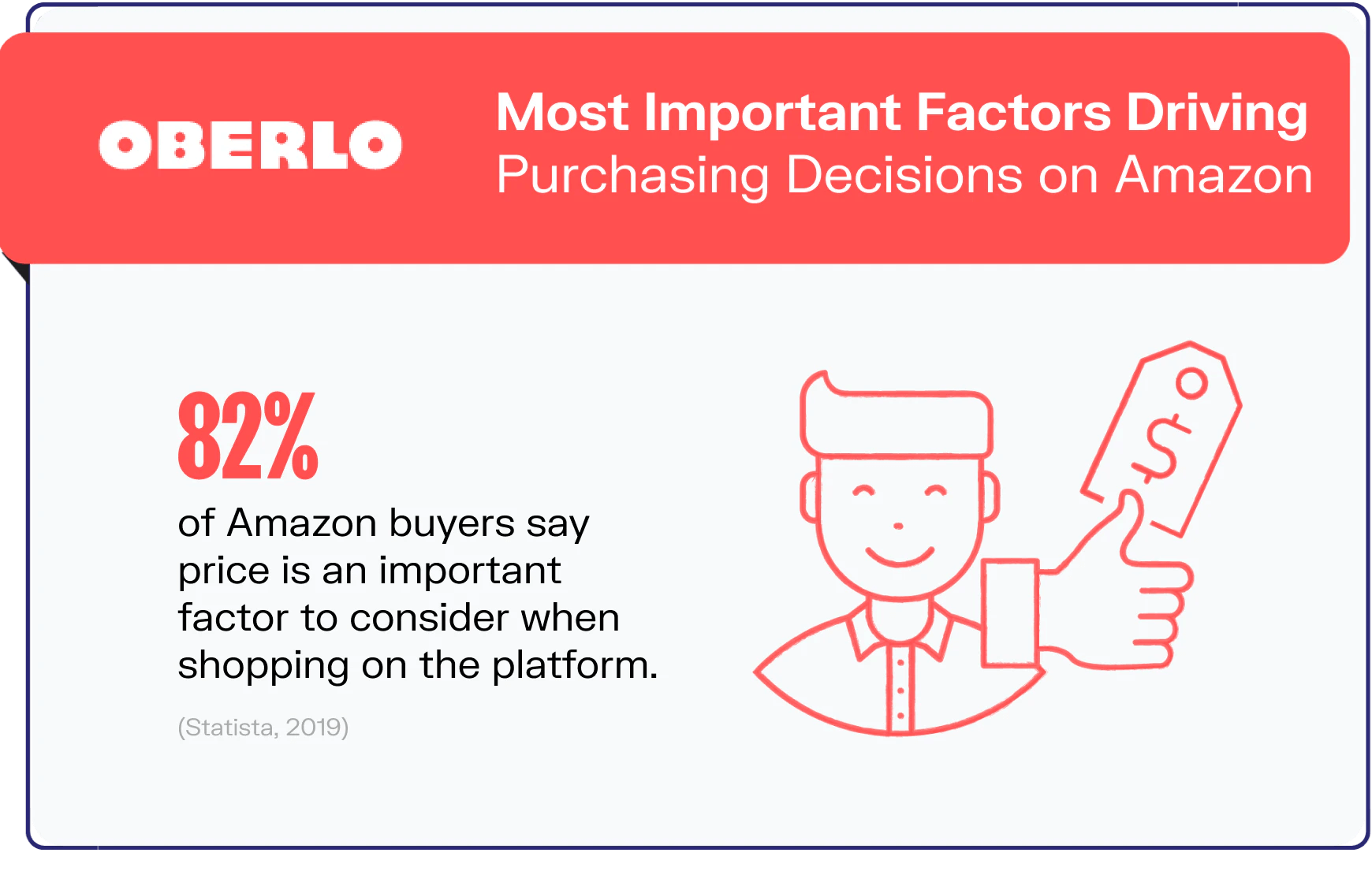It’s a great time to be an Amazon Seller—and everybody got the memo. Launching an Amazon store and letting Fulfilled By Amazon handle logistics for you has never been easier, but the tradeoff is an increasingly crowded and competitive marketplace. To become a top seller, you need to know which products generate the highest consumer demand.
Independent merchants sell over 4,000 items per minute on Amazon, and the best way to become a part of that rush is to look at which products are currently flying off the shelves. By tracking best-selling products over time, you can make smarter decisions about what products to offer, how to optimize your sales performance, and how to grow your business, even in the face of relentless competition. One way to access some of that information is by examining an Amazon Sales Rank Chart.
Whether you’re using the Amazon Sales Rank Chart as a guide to current market trends or trying to improve your position on the list, understanding how sales ranking works is essential for any professional seller.
What exactly is Amazon Sales Rank?
Amazon Sales Rank, which you may also see referred to as Best Sellers Rank, tells you how well any given product is selling within Amazon’s categories and subcategories. The lower the number, the better that product is selling relative to others in its category. For example, a long-awaited novel about dragons and ice zombies could land at #3 in the overall Books category, but claim #1 in the Epic Fantasy subcategory.
Sales Rank is calculated several times daily, based on current and historical sales volume. Every product is ranked within its applicable categories, and rankings are listed publicly on the product listing page under “Product Details.” A high rank can communicate to buyers that a product is popular, trusted, and probably a worthwhile purchase.
The Amazon Sales Rank Chart: What is it, and why should you care?
Amazon Sales Rank Charts are third-party resources that publish Sales Rank data in charts organized by category. A useful, informative chart should cover at least a year’s worth of data, including the rank for each product, pricing information, the number of products in the category, and the number of sellers listing the product. However, Amazon sometimes changes what data they make accessible to third parties, which can impact the accuracy and completeness of these charts.
Amazon Sales Rank Charts can give you an idea of how many products are available within any given category and provide a clear picture of the winners and losers. This can offer valuable insights for sellers trying to decide what products to offer and how to price them.
Are Amazon Sales Rank Charts useful?
Amazon Sales Rank Charts help provide an overview of various product categories and their top sellers. However, few charts will offer enough detailed information to reveal all the nuances about what products will provide real growth opportunities for sellers who don’t offer them—especially with Amazon restricting the available data.
Solutions like Noogata, which evaluates data on search keywords, market trends, and product performance from various sources—including your potential competitors—can be highly effective as an addition or alternative to third-party charts. Noogata’s real-time monitoring and AI-powered analytics tools can extract the most relevant, actionable insights from the product categories you’re most interested in.
Amazon Sales Rank: How does it work?
There’s a little bit of secret sauce in the Amazon Sales Rank. It’s not just based on the number of units sold; it also factors in things like the frequency with which the product is purchased. Price changes and promotional offers can also affect your standing.
A “good” sales rank depends on the number of products within the category, but in general, it’s ideal to be within the top fifty, as that puts you on the first page of the Amazon Best Sellers results. You also get a special “Best Seller Badge” if you have the number one product in a category of at least one hundred products.
It’s important to remember that a high sales rank will not necessarily improve your organic search rankings for any particular keyword. Search rankings are determined independently of sales rank, so you still need to use strong SEO tactics to secure an advantageous placement on Amazon’s digital shelf.
7 Ways to Improve Your Amazon Sales Rank Like a Pro
1. List Products in the Right Categories
Amazon offers many niche subcategories for sellers to list their products in, so make sure you pick the right ones. Rankings are based on how well your sales stack up to other products in your category, so if you’re listed in the wrong category, your sales rank will be neither accurate nor informative.
Research all of your subcategory options, choose the best one for your product, and make sure that the parent and child ASINs of variant products are all listed in the same category.
2. Optimize Your Product Listings
The higher your organic search ranking, the easier it is for buyers to find your products—and that will lead to more purchases and a higher sales rank. Detailed information, verified reviews, high-quality images and video, and customer-friendly pricing and shipping options can all help a listing’s search placement.
However, the most effective SEO tactic is to include the right keywords in the title, product description, and features. Tools like Noogata can help you find high-performing and newly trending keywords that will improve the discoverability of your product listings.
3. Gather Competitive Intelligence
To beat your competitors in the sales rankings, you need to know who they are and what they’re doing. As a platform designed to gather and analyze competitive intelligence on marketplaces like Amazon, Noogata is an ideal solution. Studying how your competitors describe, market, and price their products can give you insights that will help you execute all of the other tips on this list more effectively.
4. Use Marketing and Advertising to Your Advantage
Sometimes, the fastest way to increase your sales numbers is to unleash your marketing team to do what they do best. Social media campaigns, affiliate marketing, PPC advertisements, and other tried-and-tested strategies can convert new customers and bump up your sales rank.
5. Price Your Products Strategically
Researching your market and competitors will reveal the price points leading to the highest conversions. Undercutting your competition is often a winning move, but pricing your products too low can create negative perceptions about their quality. Frequent price changes are common in many product categories, so maintaining a winning pricing strategy requires constant monitoring, using analytics, and employing repricing tools.
6. Create Special Promotional Offers
Another way to boost your sales in the short term is to run limited-time promotions. You can share coupons, offer free shipping, or set up Amazon Lightning Deals and count on the fact that many customers can’t pass up a bargain. If you time it right, the extra sales from these offers will compensate for the profits you’re sacrificing.
7. Engage with Your Customers
Strong customer relationships will lead to repeat purchases, positive word-of-mouth recommendations, and five-star reviews. Stay engaged with your customers by providing excellent support and service, answering their questions, responding thoughtfully to critical reviews, and considering their feedback. This is a long-term strategy, but it can pay huge dividends.
The Path to Success Runs Through Uncharted Territory
Amazon Sales Rank Charts can give sellers the lay of the land regarding product categories, but these lists rarely have the detailed and nuanced data you need when deciding what products to offer and how to market them.
Noogata’s deep analytics apply the power of AI to market trends, competitor activity, and organic search optimization, which makes it a much more effective way to grow your Amazon sales.
If you’re ready to ascend to the top of Amazon’s Best Seller Rank, book a demo with Noogata to see the difference the right tools and analytics can make.







